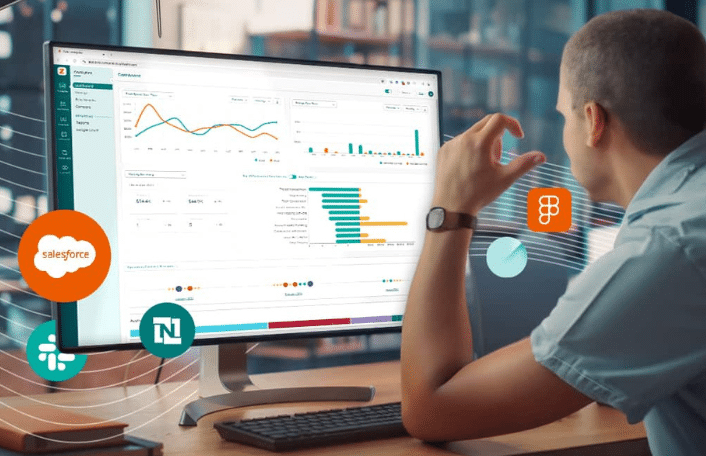
Why Data Integrity Is Central to SaaS Management
Table of Contents ToggleWhy Data Integrity Breaks DownWhat Does Data Integrity...
Back
Back
Search for Keywords...
Blog

Table of Contents
Providing employees with better access to business applications enables them to be more productive. In short, making workers aware of available tools and SaaS applications is a critical factor in reducing time-to-value and increasing overall employee effectiveness.
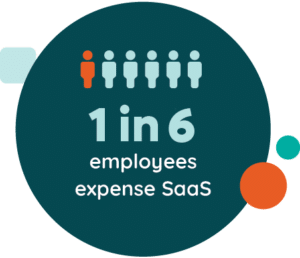 Today, consumers and, by extension, employees expect more than ever from applications in every aspect of their lives, including the workplace.
Today, consumers and, by extension, employees expect more than ever from applications in every aspect of their lives, including the workplace.
Without a substantial examination of where, how, and when employees acquire business tools such as SaaS applications and cloud-based software, the risks of security, data governance, and cost overruns become realistic organizational concerns. Consider this: As many as one in fifteen (6.6%) employees in the average enterprise purchase SaaS applications and cloud-based software.
As a result, SaaS costs accumulate quickly and may account for why the average enterprise software investment has climbed to spending $4,830 or more per employee.
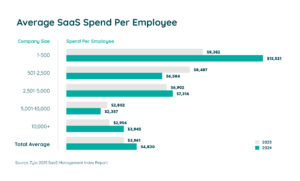
But the cost isn’t the only reason: Onboarding employees and getting them ramped up to full productivity as fast as possible is essential to making them effective agents for the organization.
Ninety percent of executives in a survey noted that new-hire retention was an issue – and the majority indicated that 10 to 25 percent of all new hires leave within the first six months of the job. Nearly all surveyed executives (98 percent) identified effective onboarding as a vital factor in promoting retention.
Not only do employees need to be oriented to institutional values such as culture and unique business practices, but they also need access to the right tools. According to a recent survey, 92% of employees stated that having the technology necessary to do their job efficiently affects their satisfaction at work. Nearly one out of three employees in the same survey said they would quit their job if the technology at work is outdated.
And in another survey, 73% of respondents said they know of tools or technology that would help them produce higher quality work.
Onboarding and technology matter to employees and the retention of new hires, but there’s often a disconnect between what the C-suite believes and the actual employees’ experience. In a recent PWC survey, 92% of C-suite leaders said they were satisfied with the technology experience their company provides – but only 68% of surveyed employees agreed.
How can businesses offer onboarding and give employees timely access to the right SaaS applications and software tools?
Making a cloud-based technology stack fully transparent is a foundational step towards optimizing the management of SaaS applications and improve employee effectiveness.
After all, the prevalence of employee application acquisition and resulting shadow IT translates to the average enterprise underestimates its SaaS application inventory by two to three times. In practice, this means the average company believes it maintains about two to three hundred applications.
However, Zylo’s 2025 SaaS Management Index shows that the average organization has 275 applications and spends $49M on SaaS annually. In the large enterprise, those figures rise to an average of 660 applications and $284M in SaaS spend.
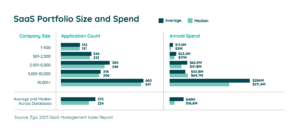
When every tool, application, and subscription is made visible – including its function, cost, ownership, and utilization – it makes effective management possible. Applications can be standardized to fit within a system of record that allows the IT department and other business units to evaluate the value and business effectiveness of each application. This process allows software investments to undergo optimization for efficiency, effectiveness, and maximum ROI.
A central, holistic viewpoint is an essential foundation for SaaS Management, but imagine the power of providing a version of this foundational central viewpoint to employees in the form of a business application catalog, such as Zylo’s App Catalog.
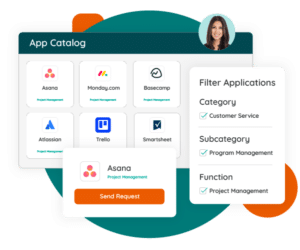 Imagine this catalog is available to every employee from Day One and contains every tool required for the employee to accomplish their goals – and more. To acquire the tool in their inventory, an employee clicks an icon in the catalog. If their role or position qualifies, they’re entitled to obtain pre-approved applications.
Imagine this catalog is available to every employee from Day One and contains every tool required for the employee to accomplish their goals – and more. To acquire the tool in their inventory, an employee clicks an icon in the catalog. If their role or position qualifies, they’re entitled to obtain pre-approved applications.
Imagine how seamless the experience would be and the downstream benefits to the effectiveness of the employee and the organization. This catalog of SaaS-based applications would create:
A suite of pre-selected, pre-approved applications available on Day One would drastically reduce time-to-effectiveness for new employees. Rather than a piecemeal approach to new hire provisioning for software, employees would have access to a “one-stop” shop for all software needs.
And this value would extend beyond just the first week of employment. Employees at any time could use an application catalog to discover new software tools and self-provision or request access.
With self-service SaaS provisioning or pre-approved application provisioning, IT’s role in new-employee onboarding or general application provisioning could be reduced.
Application access or information requests now are routed to the correct person, the application owner or manager, reducing IT touches and providing more effective routing.
This distributed provisioning strategy would allow IT to focus on providing support for more critical tasks.
Who owns this application? How can I request access to additional seats? What department holds the contract and controls spending? Without clear access to answers, each of these questions can quickly derail an employee’s attempt to acquire a new tool or create ideal conditions for rogue employee software acquisition, aka shadow IT.
An application catalog could solve these problems by not only making available applications accessible to employees but also highlighting critical information such as department and individual ownership and contact information for application owners.
Lack of clear guidance regarding application acquisition is a primary cause for the fact that approximately one in five employees in the average organization use expense reimbursement to acquire new SaaS applications. This method of acquisition can side-step software review and approval processes (if established) and contribute to the rapid growth of shadow IT.
However, if employees can access a central catalog that contains every pre-approved application associated with their role, this improved visibility could reduce the need for side-stepping approved acquisition channels, thereby reducing risks from shadow IT.
The cloud-focused future is here and it’s already made the new era of self-provisioned software a reality. Today, lines of business already own the lion’s share of application spending, not IT. For example, IDC predicts that up to 70% of all application spending already resides with lines of business budgets, not IT’s.
Further, Gartner states that 30-40% of all software spending is shadow IT – that is, tools and software not directly approved, managed or controlled by IT, but by individual business units and employees.
With these facts in mind, IT and business leaders face a choice: Proactively develop new ways for employees to access and acquire approved SaaS apps and boost effectiveness – or reactively deal with shadow IT as it occurs and the sprawl that comes with it.

Table of Contents ToggleWhy Data Integrity Breaks DownWhat Does Data Integrity...
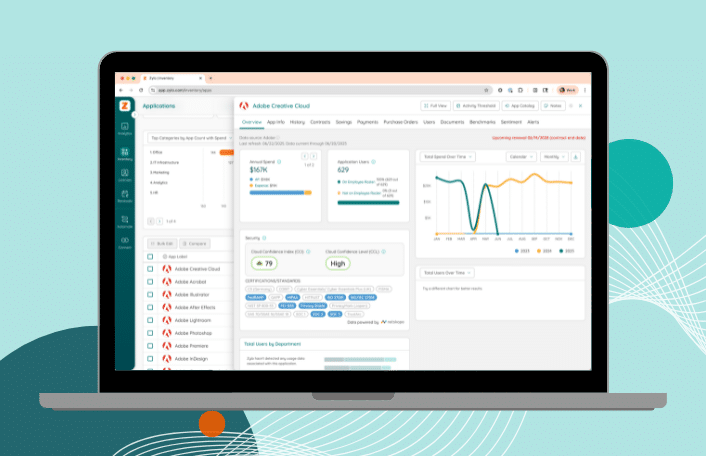
Table of Contents ToggleEffective Onboarding Improves New-hire RetentionVisibility of SaaS the...

Table of Contents ToggleShelfware DefinedWhy Shelfware HappensPoor Organizational OversightShadow IT and...
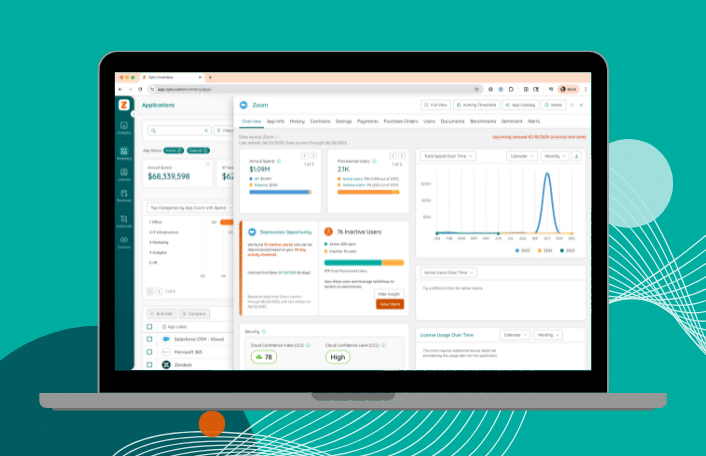
Table of Contents ToggleEffective Onboarding Improves New-hire RetentionVisibility of SaaS the...
| Cookie | Duration | Description |
|---|---|---|
| cookielawinfo-checkbox-analytics | 11 months | This cookie is set by GDPR Cookie Consent plugin. The cookie is used to store the user consent for the cookies in the category "Analytics". |
| cookielawinfo-checkbox-functional | 11 months | The cookie is set by GDPR cookie consent to record the user consent for the cookies in the category "Functional". |
| cookielawinfo-checkbox-necessary | 11 months | This cookie is set by GDPR Cookie Consent plugin. The cookies is used to store the user consent for the cookies in the category "Necessary". |
| cookielawinfo-checkbox-others | 11 months | This cookie is set by GDPR Cookie Consent plugin. The cookie is used to store the user consent for the cookies in the category "Other. |
| cookielawinfo-checkbox-performance | 11 months | This cookie is set by GDPR Cookie Consent plugin. The cookie is used to store the user consent for the cookies in the category "Performance". |
| viewed_cookie_policy | 11 months | The cookie is set by the GDPR Cookie Consent plugin and is used to store whether or not user has consented to the use of cookies. It does not store any personal data. |
